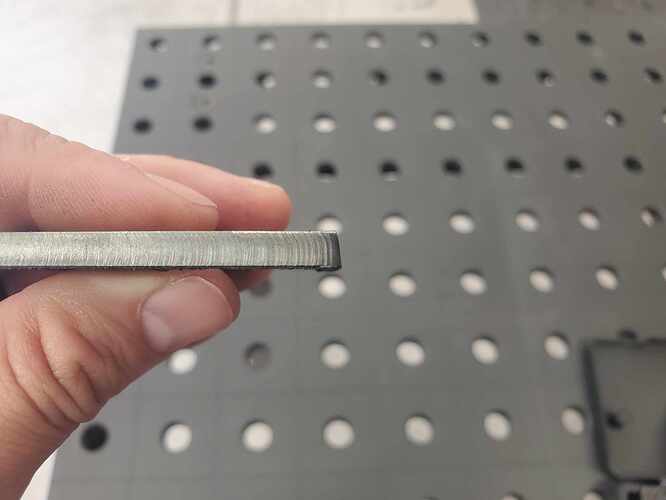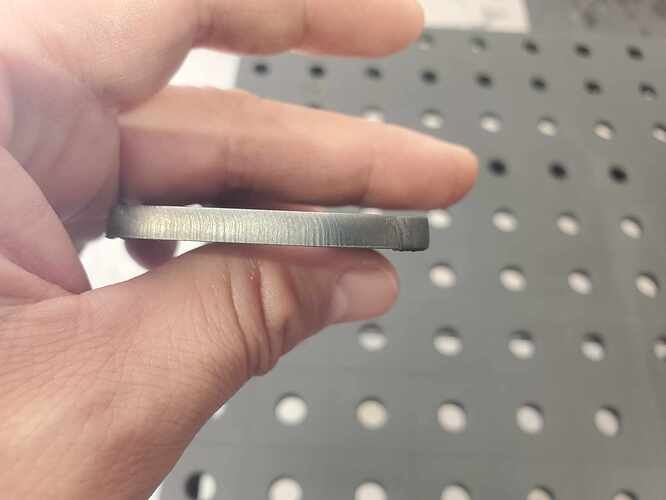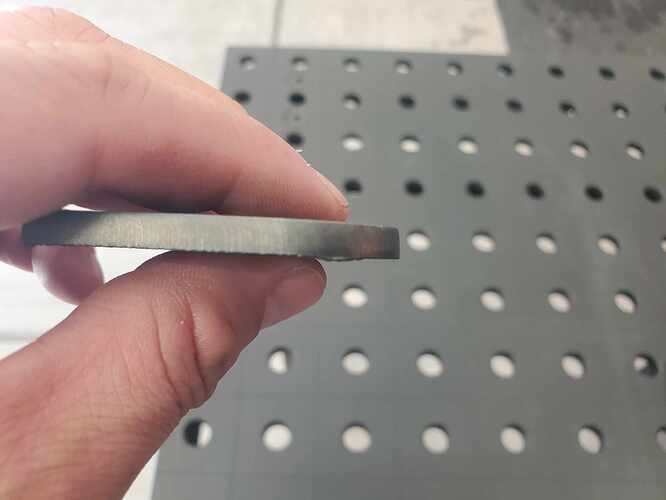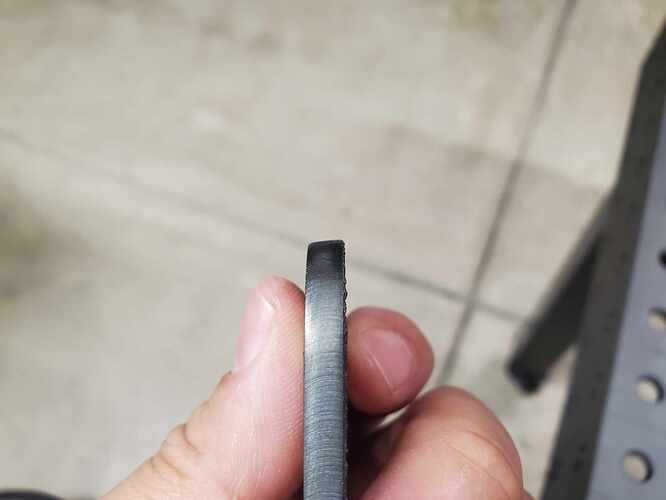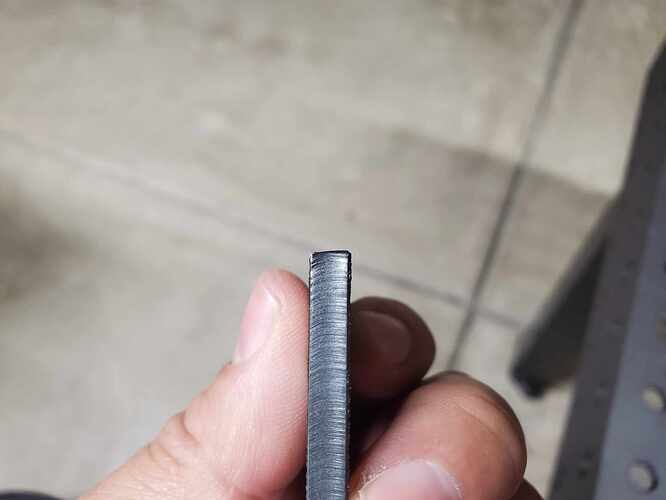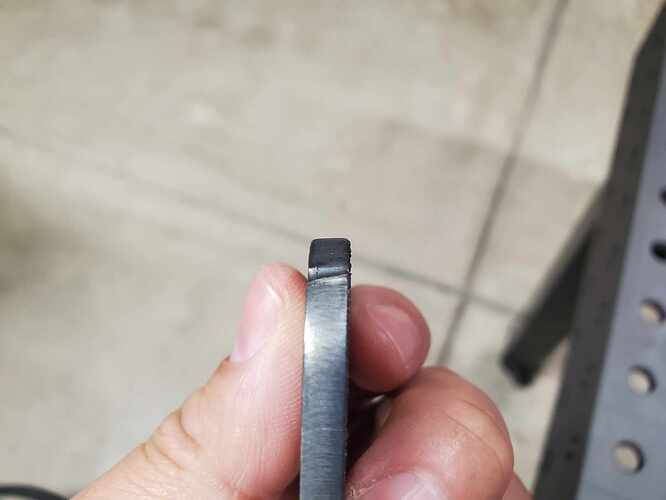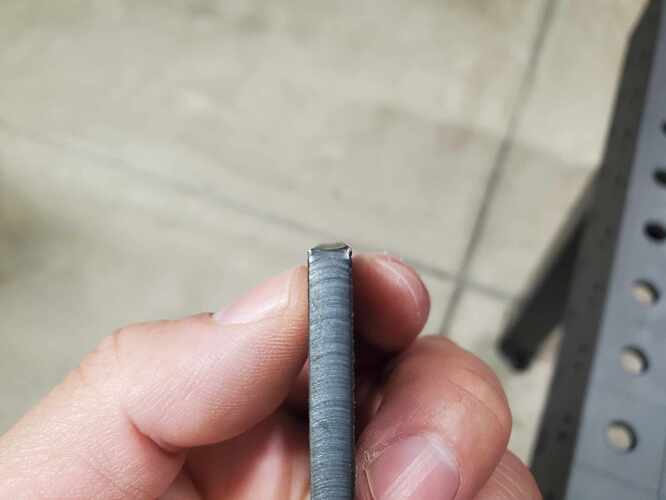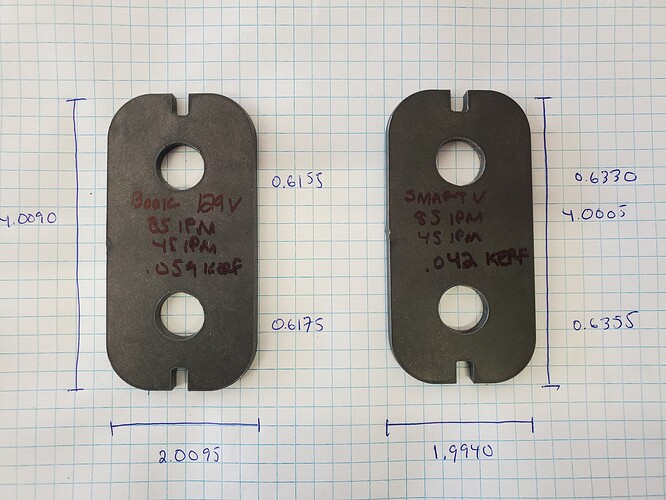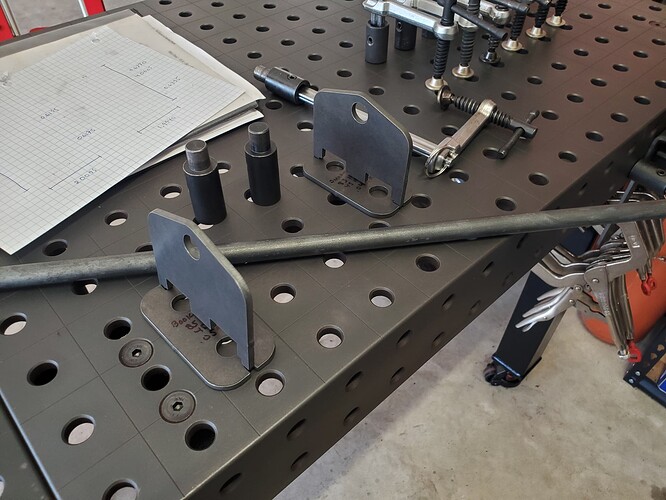The general consensus seems to be “use nominal voltage”.
Just implemented my new Hypertherm 45XP as a means of replacing my old PrimeWeld CUT60 with UPM-105.
Let me pre-face by saying, I’ve helped many dial in their setup which meant - figuring out my kerf width, followed by multiple test runs at different amps and speeds, as well as pierce delays.
The method is far from new for me and my work spoke for itself.
Now that I switched to the Hypertherm, I find I’ll have to do this all over again, but differently.
Book says for 3/16" to run 0.5 pierce delay, 85ipm, .059" kerf width, and 129 volts and I entered all figures to a T.
Background, I am using the Hypertherm CPC so everything is plug and play, as well as a machine torch.
Anyway, the drawn test piece is a 2.5" x 2.5" part with .75" center hole and it resulted in being 1.9755" x 1.9765" and the hole come out to .7230"
I decided to do another test cut using smart voltage, and found I needed a programmed cut height of .045" to achieve .06" physically. My kerf width also measured about .04"
Decided my next test piece would be 2" x 2" with a .625" center hole.
Entering these values and running smart voltage gave me a part measuring 1.9965" x 1.9985" and my center hole being .6235"
So what am I getting at?
Well, let’s add a rating of 1 through 10 for beveling with 10 being the worst and 1 being square.
When I cut my test piece using nominal voltage, I had the top edge with a “3” for bevel. The left, right, and bottom edges were between “0” and “1”.
When I cut my test piece using smart voltage, I had the right edge with at most, a “2” for bevel…closer to a 1, and the remaining sides at a “1”
I will spend Saturday dialing stuff in but I’m at an impasse if whether I should dial my stuff with smart voltage, or waste more steel using nominal and trying to figure out why all sides are nearly square with one side having a bevel.
I unmounted and remounted my torch multiple times and it was absolutely square to the table not to mention a lot of weight placed on my steel sheet to ensure it is flat against the slats. Doing this I’m removing as many variables as I can in order to best read back my cut results and adjust from there.
Just wondering if some of y’all said fuck it and went smart voltage and stuck with it.
